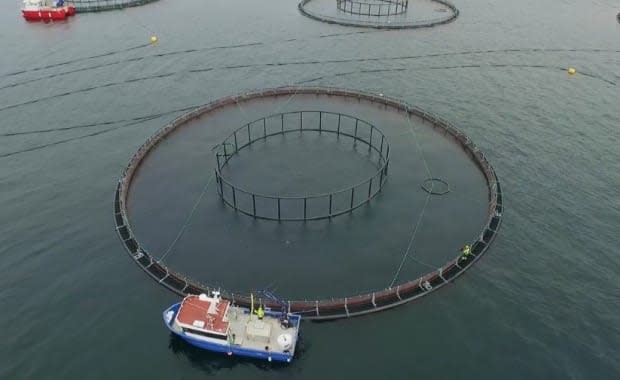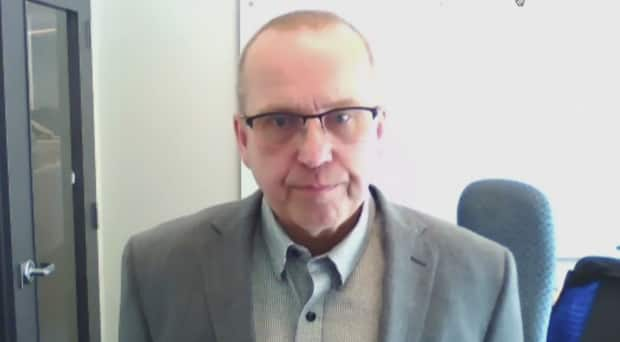Ottawa backs $27M open-net salmon farm, ocean sensor project in Atlantic Canada

A Norwegian company's proposal to open a salmon farm and hatchery in Placentia Bay, N.L., got a major boost Thursday from Canada's OceanSupercluster, a federal innovation funding organization.
The organization announced that Grieg Seafood, an on-again, off-again salmon facility planned for Marystown, will be used to develop ocean sensors that allow open-net pens to be monitored and managed remotely from shore.
The Ocean Supercluster will contribute $12 million with industry partners putting in $14.8 million.
The project will use communication towers installed around Placentia Bay to receive data gathered by sensors in the water. The information will be transmitted to control centres on shore.

Some of this technology is already in use at fish farms operated by Cooke Aquaculture, a Grieg competitor, elsewhere in Atlantic Canada.
But Tim Stone of Halifax-based InnovaSea, a partner in the project, said the systems planned for the Grieg operation represent a leap forward.
Its sensors are installed in more than 300 fish farms around the world.
"We're not talking about making incremental improvements to technology," Stone told reporters Thursday. "We're talking about actually changing the way people do things."
They can tell when a fish is hungry, or full
High-definition cameras, sensors and machine learning will come together in Placentia Bay to measure the size of the fish, the amount of feed eaten and wasted along with real-time ocean conditions.
For example, video will reveal when fish are hungry, or full. When satiated, salmon stop feeding on pellets and let them go through the water.
Operators will be able to instantly stop the feeding process.

"Those technologies, although individually they may exist in some parts of the world, no one has ever brought them together to provide multi-factor feeding in aquaculture-industry sensing technologies," he said.
One of five partners
InnovaSea is one of five partners, led by Grieg Seafood Newfoundland. The other partners are SubC Imaging, AKVA Group and High-Tech Communications.
It is a two-year project with work beginning later this year.
For Grieg, Thursday's announcement is a step forward after a major setback last fall when it shut down construction of its hatchery in Marystown, citing poor salmon prices caused by the pandemic.
Grieg halted a post-smolt unit that houses hatched salmon before being transferred to ocean cages.

The company said at the time work would continue on the other elements of the project.
Grieg spokesperson Perry Power said Thursday the installation of the communication towers will be a boon for the Placentia Bay area, where wireless communications are limited.
"This is a win-win for everyone," he said. "It's going to create not just for us but for mariners and pleasure craft operators out in the bay … a level of enhanced safety of connectivity," he said.
OceanSupercluster CEO Kendra MacDonald said the project puts Atlantic Canadian companies in a position to export their wares.
"We see this is a really exciting project from the perspective that it is building on existing technology," MacDonald said.
"It's developing expanding technology solutions and these technologies can be taken to the rest of the world to really help with the journey to transform the aquaculture sector. So we do see that this is transformational."
MORE TOP STORIES

